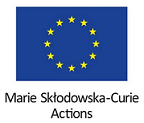COUPC1: Coupling strategies for scavenging reactive C1 intermediates in hydrogen generation

Specific programme: Marie Sklodowska-Curie Individual Fellowships (IF)
UPV/EHU Partner Status: Coordinator
UPV/EHU PI: Enrique Iglesia
Project start: 01/04/2020
Project end: 30/09/2022
Brief description: Recent findings have suggested the plausible involvement of formic acid (HCOOH) as a gaseous molecular shuttle in WGS reaction , which is specifically promoted by oxides (ZnO, CeO2, TiO2) that are known to selectively dehydrate HCOOH (microreverse of HCOOH formation from CO and H2O) and metals (Cu, Pt, Pd, Au) that do dehydrogenation (to CO2 and H2 in WGS) and hydrogenation (to methanol). The intermediate of interest (HCOOH) is formed in situ from CO/H2O mixtures on metals and oxides that catalyse selective HCOOH dehydration, and thus its microscopic reverse. Subsequent HCOOH dehydrogenation would lead to the formation of H2 and CO2, completing a water-gas shift (WGS) turnover without requiring interfacial contact among functions.
A notable promotional effect has been recently detected in catalyst without requiring atomic contact, meaning that the two functions need to be “close” but not in atomic contact but involving a molecular carrier. The mechanistic details of such diffusion-mediated routes would unveil new opportunities for the specific channelling of such intermediates towards H2 and CO2, through precise positioning of a function that forms HCOOH from CO/H2O reactants and another function, present beyond atomic contact but within diffusion distances, that dehydrogenates gaseous HCOOH to H2 and CO2. Summarizing, this research would permit controlling the WGS process in order to increase H2 production worldwide. The proposed research will address the formation and scavenging of reactive and thermodynamically unstable intermediates without a C-C bond, which can be formed from C1 molecules (specifically natural gas or biogenic feedstocks), through the precise positioning for their formation and scavenging functions.
